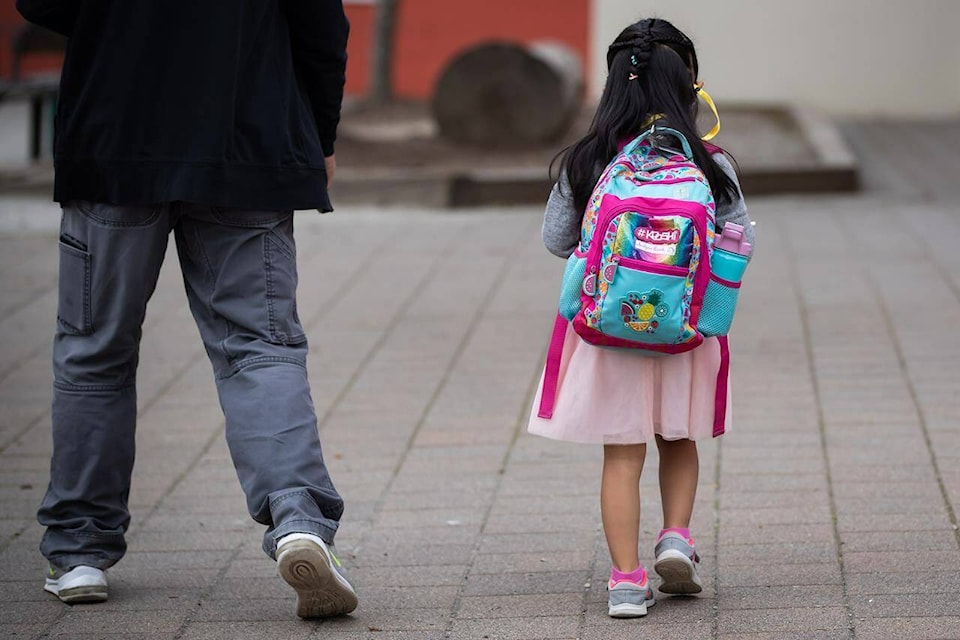For years, Staples Canada has advertised back-to-school supplies to the tune of the “It’s the Most Wonderful Time of the Year,” with parents eager to see their children return to class after a busy summer.
But back-to-school supplies can quickly add up, and parents already feeling the crunch from a rising cost of living may need to strategize how they approach this shopping season.
More than one in three Canadians, or 36.2 per cent, expect to spend more money this year compared with last when it comes to back-to-school shopping, according to a survey released by Caddle in partnership with the Retail Council of Canada. Just over half think they’ll spend the same as last year and less than 14 per cent said they’ll be spending less.
And the expenses can quickly add up.
“No matter what you’re paying for when it comes to returning to school, even the smallest of supplies can feel overwhelming for some families, given the rise in inflation and the instability of our current economy,” said Alyssa Davies, founder of the Mixed Up Money website and author of “Financial First Aid.”
“In addition, most of us have seen a steep increase in our groceries and other essentials, so buying new clothing or school supplies for kids can feel overwhelming for some.”
Given how much items in grocery stores have increased over the past six months, it would be hard to believe parents won’t be spending more on school supplies simply because of inflation, she said.
For parents with young children, the costs can add up since parents are often buying everything for the first time, especially if their kids are entering preschool or kindergarten.
“You need to get backpacks, indoor shoes, lunch kits, etc.” Davies said.
“Although parents with older children may be able to reuse supplies from previous years, technology is the most significant expense I hear parents concerned about. Whether it’s the expectation from the school to have a laptop of some kind or the social pressure from peers, it can stress families out.”
Parents can feel strong pressure to ensure their kids “fit in” and have the same brands, supplies and styles that the other students do, Davies said.
“Unfortunately, letting comparison dictate your spending habits is never a good way to stay on budget.”
Davies recommends parents consider buying certain items second-hand or reusing older supplies from previous years if there are any left.
“Although your child might have moved past their ‘Paw Patrol’ obsession, it doesn’t mean they can’t use that backpack for one more school year. I also recommend avoiding higher-priced stores as option one and instead hitting the dollar store to see if you can check off the majority of your list first.”
Janet Gray, money coach at Money Coaches Canada, said preparing parents for back-to-school expenses is not that much different than helping them save for holiday shopping.
However, advanced planning is key.
For example, if parents know that each year they’re going to spend $500 per child on back-to-school expenses, Gray recommends they set aside $50 per month 10 months prior so it’s less “pain and strain” on their day-to-day or monthly expenses.
Gray also advises parents to start their shopping with a pre-determined amount they’re ready to spend on essentials, and maybe allow an additional $50 or so that can go towards wants or upgrading to certain items like a brand name binder, backpack or jeans.
“Try to limit the wants because the wants could never end,” Gray added. And, if your kids are old enough, have a discussion about what’s most important to them, so they can negotiate between their wants and their needs. This might look like keeping an old backpack in favour of a newer, more expensive item of clothing, she said.
You also don’t need to buy everything before school starts, Gray said. If some items can be staggered, you might realize you need less than you thought.
The surveys were conducted in June 2022 using Caddle’s mobile platform and an online panel. According to the polling industry’s generally accepted standards, online surveys cannot be assigned a margin of error because they do not randomly sample the population.
—Leah Golob, The Canadian Press




